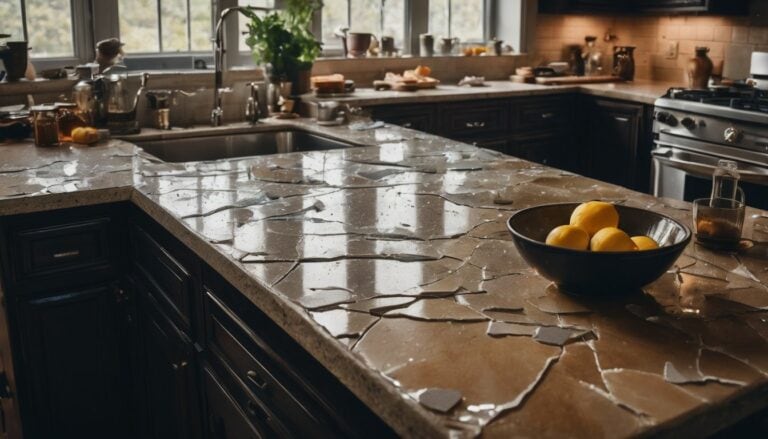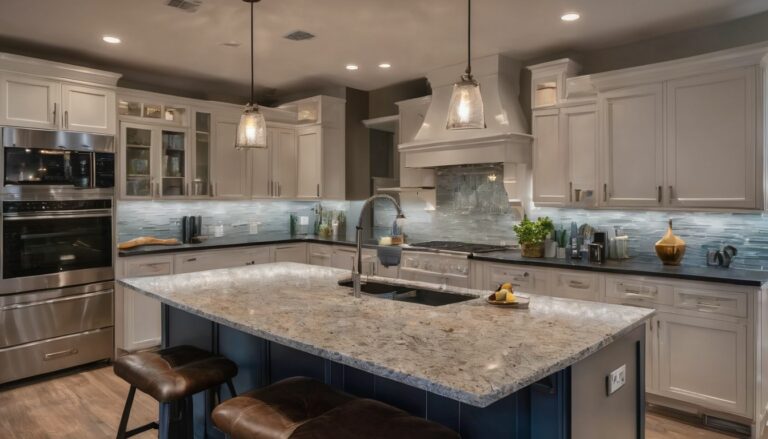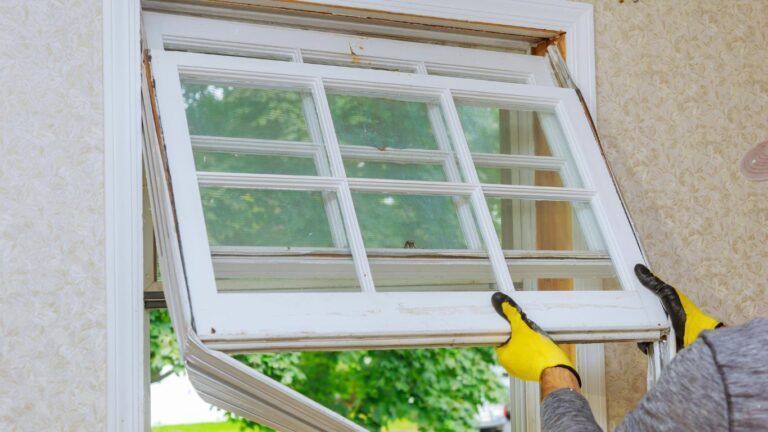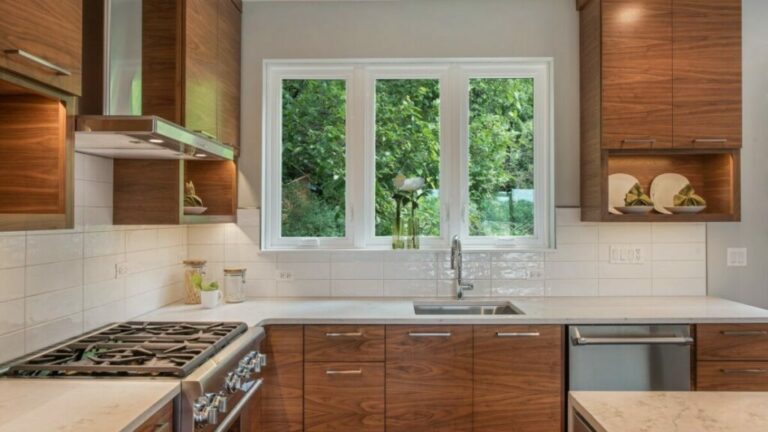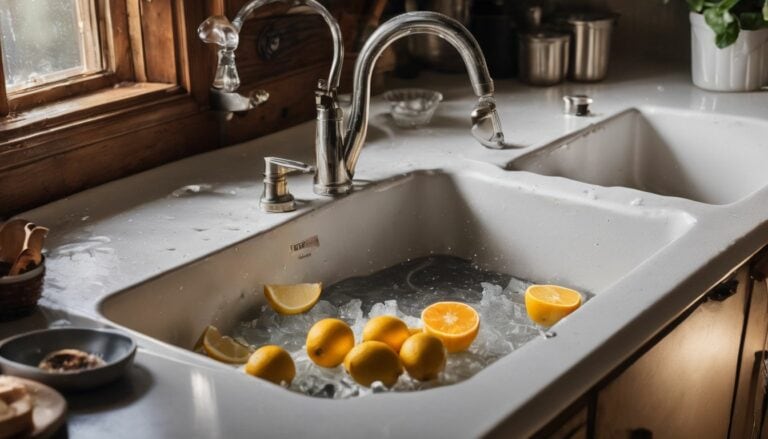How many coats do you need to whitewash?
Ever wondered how many layers it takes to get that perfect whitewashed look? With whitewashing, the power lies in the number of coats applied. Our guide is packed with tips and tricks to help you determine exactly how many coats will transform your wood into a charmingly rustic feature.
Get ready to make your DIY project shine—read on for all you need to know!
Determining the Number of Whitewash Coats
Determining the number of coats for your whitewash project is like setting the transparency on a photograph — each layer you add adjusts the opacity and texture, giving you control over the final look.
It’s not just about slathering on layers; it’s an art of balancing coverage with woodgrain visibility to achieve that perfect rustic charm.
One Coat of Whitewash
A single coat of whitewash can transform your woodwork with a subtle, chalky finish. If you’re aiming for just a hint of color and a natural look, one layer does the trick. It’s quick and effortless — perfect for that rustic charm or to brighten up a space without hiding the wood’s character.
Spread it evenly with long strokes and watch as the grain peeks through softly.
This light application may be all you need if you prefer an understated style. Remember, though, while one coat offers sheer coverage, adding another can increase sheen and richness.
The process is simple: apply, let dry, then decide if your piece calls for more brilliance or should remain kissed by just a whisper of white.
Two Coats of Whitewash
Moving past the option of just one layer, applying two coats of whitewash can bring about a transformation. This method ensures more consistent coverage and helps to hide any remaining wood stains that peeked through the first coat.
With two applications, the look leans towards solid yet still allows some natural wood elements to shine subtly beneath.
For those seeking a middle ground in their finish, this might be the sweet spot – offering a good balance between showing off the wood’s character and achieving a fresh, clean appearance.
Between each coat, allow ample time for drying; this patience pays off in quality results. Remember to seal your work with water-based polyurethane to protect it from wear and tear over time.
Three Coats of Whitewash
Going for three coats of whitewash might be your best bet if you’re aiming for richer brilliance on your wood furniture. Each layer you brush on adds depth and a more solid cover, hiding the dark shades beneath.
For traditional lime-based whitewash, expect to apply at least three coats to get that semi-opaque finish. It’s true—patience pays off! You’ll see a noticeable difference with each coat as the wood’s surface becomes brighter and more vibrant.
Before jumping into tips for successful whitewashing, let’s talk about applying those layers just right.
Understanding Whitewash
Whitewash creates a unique style for wood and brick surfaces. It lets the natural texture show through while giving everything a fresh, clean look. Think of it as a light coat that can be built up—you control how much of the original surface to reveal.
With whitewash, you mix lime putty with water; this simple combo has been used for centuries to protect and beautify walls.
The beauty of whitewash is in its flexibility. You decide if the grain of your wood stands out or if you prefer a more solid color by adding more coats. And remember, it’s not just about looks—whitewashing also protects your surfaces from mildew and insects.
Whether you’re sprucing up an old fence or giving your living room character, knowing how to work with whitewash will help you achieve that perfect balance between rustic charm and modern flair.
Basics of Whitewashing Wood

Diving into the world of whitewashing wood, it’s all about mastering the balance between showcasing and preserving the natural charm of wood grain while achieving that fresh, modern vibe.
Whether you’re eyeing a true, rustic whitewash using traditional mixes or aiming for a sleeker faux whitewash effect with contemporary materials, understanding these techniques will transform your home decor projects from bland to grand.
True Whitewash
True whitewash is all about creating a classic look while letting the wood’s natural beauty shine through. You’ll need to mix up your own paint, combining it with water until it has the consistency of heavy cream.
This thinned-out mixture is what gives true whitewash its transparency and charm. Brush it onto the wood in long strokes, following the grain to ensure that each crevice and knot stands out.
After applying, watch as the wood absorbs the whitewash, enhancing textures and adding character without hiding knots or grain. True whitewash requires patience; thin layers work best for building up that sought-after finish.
Each coat dries quickly—keep moving swiftly across small sections to avoid patchy spots. Remember to sand off any old finish before starting and wipe down with a tack cloth for a clean surface ready for transformation!
Faux Whitewash
Moving from the traditional approach, faux whitewash gives you options. You can use materials like chalk paint to create a similar effect without using actual lime. This method is great for achieving a white finish while keeping some of the wood’s natural charm visible.
Mix water with your chalk paint until it reaches the consistency of heavy cream.
Apply this mixture with a brush, working in sections. Make sure each coat dries before adding another layer if you want more coverage. Some folks prefer this method because it offers control over how much wood grain shows through.
It’s perfect for those who want their pieces to zip with fresh style but still hint at the wood’s original beauty. Use rags to wipe away excess paint—this technique helps reveal more grain and texture.
Comparing Limewash and Whitewash
Transitioning from a discussion about faux whitewash, let’s delve into how traditional whitewash and limewash compare, as both are viable options for achieving that timeless finish. Understanding these differences is crucial for selecting the right approach for your project.
| Aspect | Limewash | Whitewash |
|---|---|---|
| Composition | Made from hydrated builder’s lime, salt, and water | Typically white paint thinned with water |
| Finish | Earthy, matte, and textured | Smooth, consistent, and often matte |
| Application Surfaces | Ideal for porous surfaces like brick and wood | Suitable for various surfaces when made from paint |
| Color Variability | Accessible in versatile shades; can be tinted | Natural color is toned down; usually comes in white |
| Technique | Water-based, requires more skill to apply evenly | Can be easier to apply with less variation in texture |
| Durability | Long-lasting on suitable surfaces; can be refreshed | May require sealant for durability; easier to clean |
| Environmental Impact | Eco-friendly, breathable coating that regulates humidity | Depends on the type of paint used; some may be eco-friendly |
With these factors laid out, you can weigh the pros and cons of each method and choose one that aligns with your project goals and the aesthetic you aim to achieve.
Steps to Whitewash Wood
Delving into the transformation of wood through whitewashing is a journey where simplicity meets elegance, and I’m here to guide you on this crafty adventure—let’s unlock the beauty hidden in grains and textures with just a brush stroke.
Sand Wood
Before you start whitewashing, get your wood ready. If it’s raw wood, you’re in luck; no need to sand down before the first coat. However, if you want that ultra-smooth finish later on, a little sanding between coats will do wonders.
Use fine grit sandpaper and work gently across the surface. You’ll remove any bumps or rough spots this way.
Always move along with the grain of the wood to avoid scratches that stand out. Keep your motions even and don’t press too hard—a light touch is best when prepping for a whitewash look.
Remember, sanded surfaces help the watery mix stick better and absorb into each layer consistently for that dreamy washed-out effect.
Create Whitewash Mix
Get your whitewash mix ready by diluting water-based white paint with water. Aim for the consistency of heavy cream. A good rule of thumb is to mix five parts water with one part paint.
Stir the two together until they blend smoothly.
Once your mix is ready, grab a brush and get set to transform that piece of wood. Up next, you’ll learn how to apply it just right!
Brush On Whitewash Mix
Grab a brush, roller, or sprayer to apply your whitewash mix. The trick is in the consistency—aim for that perfect 5 parts water to 1 part paint ratio. Start with even strokes and cover every inch of wood.
You want a thin layer that lets the wood’s natural grain peek through.
If you’re tackling wood furniture, consider the denser 1:1 mix for better coverage. Move methodically across each surface; overlapping the strokes will prevent patches and streaks.
Watch as each stroke transforms the wood with a soft, milky veil that brightens but doesn’t obscure its charm.
Tips for Whitewashing Wood
Mix your own whitewash to save money and control the finish. Start with white, latex paint and add water; a 1:1 ratio is good for transparency. Want more coverage? Use a thicker mix of 2 parts paint to 1 part water.
Choose your tools wisely. A wide brush works best for large, flat surfaces. For smaller areas or details, switch to a narrower one.
Always sand the wood first with coarse grit paper to help the wash stick better. Then test that mix on scrap wood or in a hidden spot.
Seal everything up once you’re done whitewashing! Apply water-based clear coats or clear wax for protection without changing the color too much.
Moving forward, let’s contemplate how our choices can impact the final look of our project..
Conclusion
Now you know the ropes of whitewashing. Each layer paints a unique story – one coat for a whisper of color, two for warmth, and three to make it stand out. Remember, let each coat dry before adding another.
Trust your eyes and taste to guide you through the process. Your perfect finish awaits at the end of that brush!
FAQs
1. How many coats are needed for a strong wood finish with whitewash?
Typically, two to three coats of whitewash will give your wood that perfect finish. Just remember, the number can change based on the type and color of the wood.
2. Do I need to thin my paint before whitewashing?
Yes, you do! Thinning out your paint helps it spread easily and settle well into the wood’s texture. It’s all about getting that smooth, even coverage.
3. Is one coat enough if I’m using polyurethane after whitewashing?
One coat might not cut it—you’ll want at least two to ensure a good base before adding polyurethane for protection and shine.
4. After applying the first coat, how long should I wait before adding another?
Hang tight for a bit; give that first layer about 24 hours to dry completely—patience is key here! Then go ahead with your next coat for that crisp look.


